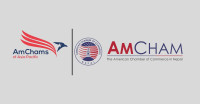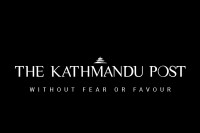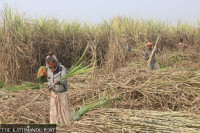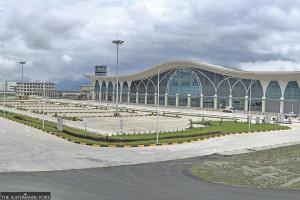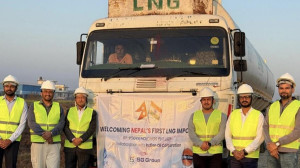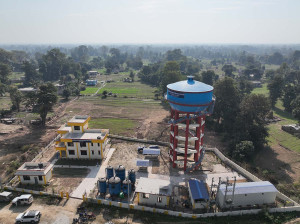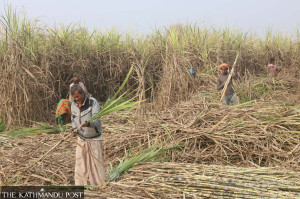Money
Nepal scraps $500 upper Mustang trekking fee for foreigners, sets $50 daily
Move aims to boost tourism in the restricted region as trekking agencies push for reforms.
Sangam Prasain
In a bid to attract tourists, the government has decided to remove the flat $500 per person per 10-day period fee for foreign trekkers visiting the upper Mustang region near Korala on the Nepal-China border, a restricted area, decades after the charge was imposed. The new fee will be $50 per person per day, once the rules are amended.
Trekking agencies say that this is just the start, and hope restrictions in other areas, both in terms of fees and entry, will be gradually eased as well.
Minister for Communications and Information Technology Jagadish Kharel, the government spokesperson, said so while informing the media on the decisions of Tuesday’s Cabinet meeting.
He said that changes will be made by amending the Immigration Regulations.
According to the Department of Immigration, trekking in the restricted areas of upper Mustang and upper Dolpa currently costs $500 per person for the first 10 days and $50 per person per day beyond 10 days.
The Trekking Agencies Association of Nepal welcomed the decision, saying it had been requesting the government to ease the restrictions. “But there should be certain restrictions as overtourism can damage biodiversity in one of the world’s most iconic places,” said Sagar Pandey, president of TAAN.
“We have also requested similar easing in other areas like upper Dolpa.”
Meanwhile, TAAN also urged the government to remove the provision that requires permit holders to be in groups of more than two people. “Why isn’t a single foreign trekker allowed to visit the restricted areas? There is no logic,” Pandey argued.
“Our demand, however, doesn’t mean that foreign trekkers should be allowed to wander freely in restricted areas. They will be accompanied by a guide, which is mandatory in all trekking areas except Everest.”
Apart from dozens of unrestricted trekking areas, there are certain trekking regions designated as “restricted areas” that are highly regulated by the government, where free independent trekkers are strictly forbidden.
Taplejung, Sankhuwasabha, Solukhumbu, Dolakha, Rasuwa, Gorkha, upper Mustang, Manang, upper Dolpa, lower Dolpa, Mugu, Humla, Bajhang and Darchula districts that border Tibet were declared out of bounds for foreign visitors in the 1970s.
Foreigners are required to obtain special permits from the Department of Immigration to travel to these areas. Also, permits are not issued to individual trekkers. Only those travelling in a group through a government-authorised trekking agency can apply for such permits.
Permit fees range from $10 a week to $500 for 10 days, depending on the area.
In the 1970s, the government restricted the movement of foreigners in several northern villages bordering Tibet, as Tibetan Khampa rebels who opposed Chinese rule were found to be using the Nepali territory to mount raids into China. In 1974, the Nepali Army succeeded in completely disarming the rebels, but the travel restrictions stayed.
The official history of trekking in Nepal started in 1949 when the country opened its doors to the outside world after centuries of isolation.
British diplomat and mountaineer Lieutenant Colonel James Owen Merion Roberts is credited with organising the first commercial trek in Nepal in 1950.
Trekking agencies and tour operators have been lobbying the government to open up these areas, which they say have an immense potential to contribute to tourism and the local economy.
Trekking in some restricted areas is costlier.
According to the immigration department, at present trekking in the restricted areas in upper Dolpa costs $500 per person for the first 10 days and $50 per person per day beyond 10 days.
In the restricted Gorkha-Manaslu area, Manang and Mugu, in autumn (September-November), foreign trekkers have to pay $100 per person per week and $15 per person per day beyond a week. In the December-August period, which is considered off-season for trekking, it costs $75 a person per week and $10 a person per day beyond a week.
In Bajhang and Darchula, the government charges $90 per person per week and $15 per person per day beyond a week.
Similarly, in the restricted areas of Humla, trekkers are charged $50 per person per week and $10 per person per day beyond a week.
Trekkers visiting restricted areas of Tsum Valley in Gorkha are charged $40 per person per week and $7 per person per day beyond a week during the autumn season. For the period December-August, the fee is $30 per person per week and $7 per person per day beyond a week.
Likewise, the fee for trekking in each of the restricted areas in Taplejung, lower Dolpa, Dolakha, Sankhuwasabha, Solukhumbu and Rasuwa is $20 per person per week.
Tourism is a key pillar of Nepal’s economy, contributing to foreign exchange, creating jobs, and driving development across the country. In 2023, tourism contributed Rs327.9 billion to the economy and supported 1.19 million jobs.
In 2024, a total of 1.14 million tourists visited Nepal, with a notable 166,394 embarking on trekking journeys across the country.
According to government statistics, the restricted areas received 28,894 foreign trekkers, mostly in Manaslu and Upper Mustang.




 8.12°C Kathmandu
8.12°C Kathmandu

